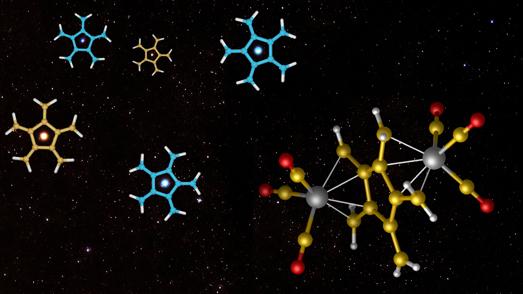
The search for life in other worlds usually begins with the investigation of planets with the appropriate temperature to form a liquid, but scientists are seeking today to find new standards to track these worlds. One technology determines the positions of the desired planets based on the chemistry of the host star, allowing close examination, without the need for any direct prior knowledge of these planets, and it helps that the stellar and planetary structures are close, subject to the known and very accurate biochemistry.
Although scientists' focus is on prominent chemical elements such as carbon and oxygen, there are other, less well-known, but extremely important elements, such as phosphorous, fluorine, and potassium.
Planet astrophysicist Natalie Henkel at the Southwest Institute said: "Although they are worthwhile elements, we haven't gotten enough attention yet, because we haven't realized how much they need them."
Henkel and her team presented the preliminary results of their analyzes at the previous meeting of the American Astronomical Society, as they focused on phosphorus in particular, given its use in the process of converting sunlight into stored energy that benefits all living things, from algae to mammals, albeit in small quantities.
What if scientists could discover habitable habitats immediately after studying stars - planets with a temperature appropriate for fluid formation - stellar structures
Henkel said: «It is like preparing cakes, if the cake requires 4 eggs and you only have 3, you will not get your desired cake, this can be likened to phosphorous, with the difference that in practice it is not possible to obtain a sufficient amount of phosphorous».
Based on the foregoing, scientists discovered - while searching for Earth-like life - stars that contain ratios of phosphorous, and began studying the planets in those systems first, but they faced a problem that is difficult to measure phosphorous in stars, due to the low possibility of monitoring a wave of light containing A percentage of phosphorous, either from Earth or using existing space study equipment.
This prompted Henkel to compile the results of observing stellar chemistry in a database, out of more than 6000 stars, only 90 of them contained phosphorous ratios (for comparison, elements in 1,400 of these stars are noted).
It is worth noting that 12 of these stars are familiar to the host planets, which may help us understand the nuances of how phosphorus is related to both the star and the planet.
"We will face a similar problem with other elements, which are biologically important, even in small quantities," Henkel said.
The limited information generated by Henkel and her team's research indicates that this methodology is ineffective in selecting interesting planets outside the solar system, but they hope their research will be an invitation to scientists to work to solve the problem of collecting data on these rare elements.
The lack of phosphorous is not necessarily necessary to determine the viability of life outside the planet Earth, as external life - if any - may not require phosphorous at all.
Henkel said: "There may be certain forms of life that do not need the presence of phosphorous specifically, but we are used to life in its presence, so - given what we know now - it was very logical to search for it."
Henkel discussed the possibility of more beneficial monitoring results than previously, and that this would require more effort in trying to monitor phosphorous ratios, and other biologically important and difficult elements for monitoring. She added: “Although it is difficult to know the exact ratios of these elements, this does not mean stopping tracking them. , We should always do more. ”
Scientists need every observational result they can get in order to track the potential life in other solar systems. It's really difficult to discover the viability of life on other planets, it's not simple, we can't go by ourselves to explore potential planets with life on them, what we can currently do is modeling.

No comments:
Post a Comment